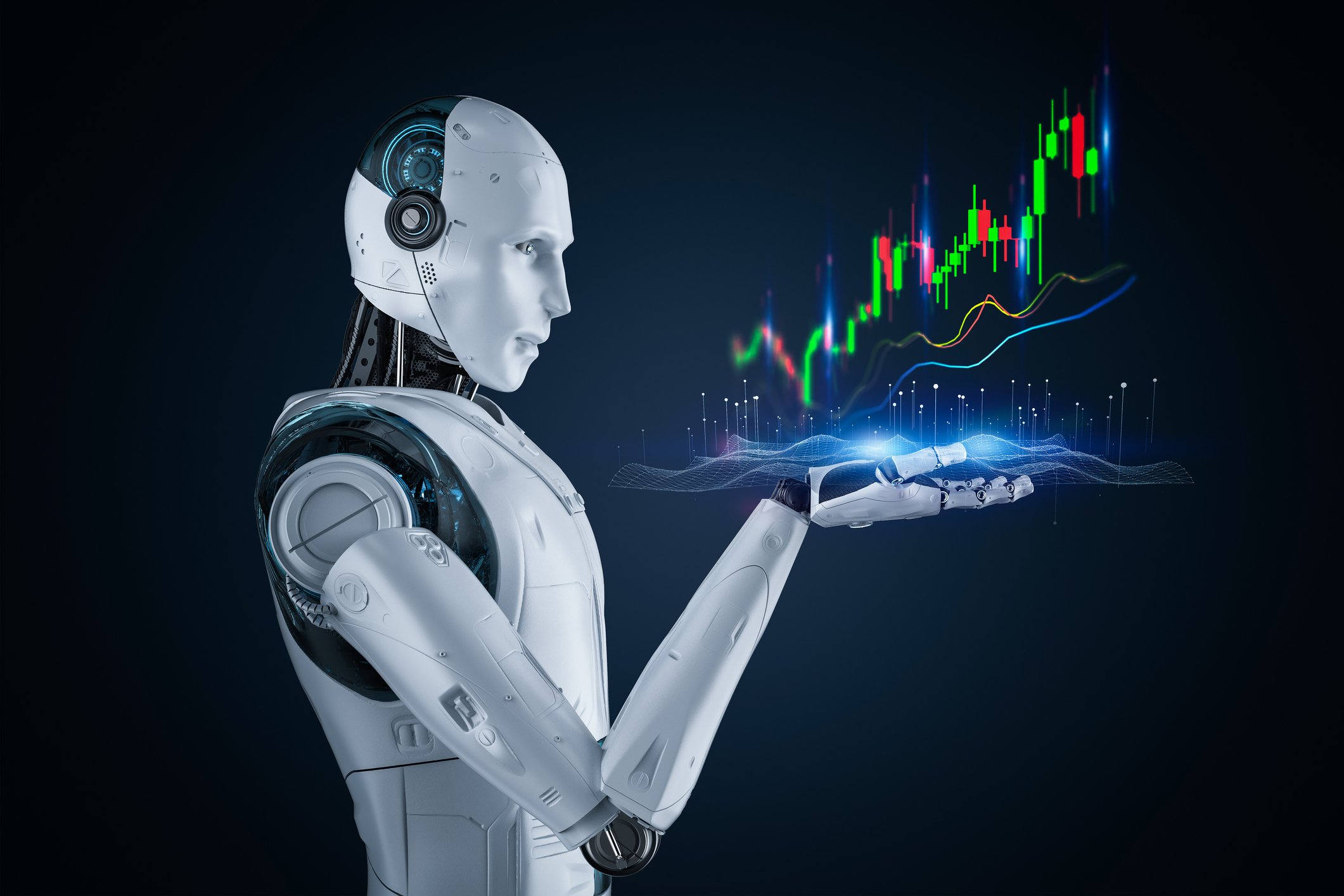The artificial intelligence (AI) revolution is well underway. Kickstarted by OpenAI's ChatGPT introduction near the end of 2022, surging interest in generative AI and machine learning systems has rebalanced the stock market. Microsoft (MSFT +0.24%) and Nvidia (NVDA 0.10%) carry two of the three largest market caps these days, largely thanks to their direct involvement in OpenAI's generative AI innovation. In the long run, the same ideas could reshape the global economy, too.
On the brink of a transformative AI era, it's crucial to consider not just the promises of innovation but also the broader economic and societal shifts at play. Will the rise of AI herald a new age of prosperity, or will it deepen existing inequalities? Do AI tools actually create wealth -- or simply redistribute assets to a new group of money-making kingpins?
I can't claim to have all the answers, but let's start thinking about the dual nature of AI's economic impact. While I see the makings of groundbreaking wealth creation, there's likely some basic redistribution happening as well.

NASDAQ: NVDA
Key Data Points
Sources of AI revenue and profits
Have you ever thought about where Nvidia's and Microsoft's AI revenue streams start from? The current situation isn't radically different from what came before, but I think the world is headed down some very different economic avenues in the near future.
1. AI-enabling hardware
A significant portion of AI profits currently comes from the sale of hardware necessary for AI computations. Large Language Models (LLM) and machine learning systems need to be trained, and systems facing the final customer (which can be a consumer or a corporation) also need to manage the flow of AI requests and responses.
It's heavy computational lifting and requires a whole new level of processing power. Companies like Nvidia are seeing explosive growth due to their high-end graphics processing units (GPUs), which also serve as AI accelerators and are crucial for training and deploying AI models. The high demand for these components drives revenue and fuels high stock valuations.
2. Software and services
Follow the AI dollar another step up the food chain, and you'll see who's buying those expensive server-side AI chips.
AI-driven software and platforms are another major revenue source. Microsoft, for example, integrates AI into its cloud services, offering advanced analytics, machine learning models, and AI-powered applications through the Azure cloud computing service. Subscription models and enterprise solutions provide steady revenue streams.
Again, a significant portion of the software-level income is passed down to hardware makers like Nvidia and system builders such as Super Micro Computers (SMCI +0.87%). The data analytics and training software won't run on air or outdated calculator chips, after all.

Image source: Getty Images.
3. Consumer products
And who is paying the software giants? In many cases, it's the global consumer.
AI is becoming increasingly embedded in consumer products. From AI-powered virtual assistants like Amazon's Alexa to personalized recommendations on platforms like Netflix and Spotify, these applications drive user engagement and generate significant revenue through subscriptions, ads, and sales of smart devices. The next round of smartphone flagships is touting AI-boosted cameras and personal assistants. New cars come with SoundHound AI (SOUN +6.62%) voice controls, powered by a unique machine learning system and channeled through the ChatGPT experience. It don't mean a thing if you ain't got that AI swing.
This is where the AI rubber hits the world-changing road. There's one more revenue stream to consider, but the AI boom won't get very far if consumers aren't paying for the newfangled computer tools in some way.
4. Enterprise applications
And here's the last stop on the road to AI wealth. Businesses across every sector are adopting AI to optimize operations, enhance decision-making, and add innovative features to their consumer-facing products. AI-driven solutions in healthcare, finance, retail, and manufacturing are creating substantial value, leading to increased investments in AI technologies and services.
Once again, a generous portion of this revenue is passed down the line through the software layer and to the hardware providers.
In this light, Nvidia's market-crushing surge is starting to make sense.

NASDAQ: SOUN
Key Data Points
Future sources of AI-based winnings
I think this is the start of a game-changing revolution. Others have compared the generative AI promise to the early days of the internet, the first smartphones, or steam engines launching the industrial revolution. Throw in the wheel, the electric guitar, or the first TV dinner, and we might be onto some significant innovations here.
So, where will the AI revenue streams start from in the future? In the end, all roads seem to lead right back to the consumer.
1. Autonomous systems
The development of autonomous vehicles, drones, and robotics should provide a serious revenue source, with AI brains at the proverbial wheel. Companies investing in these technologies, such as Tesla and Waymo, are pioneering advancements that could revolutionize transportation and logistics, potentially creating new markets and revenue streams.
In many cases, they will fight over the ordinary consumer's family budget. At some point, I'll consider selling my last car to rely on AI-driven robo-taxis for my transportation needs. That's fewer dollars headed to Detroit and the Japanese car giants but more cash aimed at the tech giants of AI automation. Ka-ching!
2. AI-driven innovation
As AI technologies mature, they will likely spur the creation of entirely new industries and services. Biotech investors can look forward to AI-driven drug discovery, energy experts have smart power grids on their minds, and agriculture lovers should have precision farming soon -- all driven by artificial intelligence. I'm only scratching the surface of a vast opportunity here. The next game-changing AI breakthrough could emerge from any sector, as every industry is hunting for that killer AI innovation.
This explosion of computer-assisted innovation could open up vast new markets, contributing to more effective solutions and long-term revenue growth. In a very real sense, this involves creating more wealth from the world's existing resources.
3. Data monetization
AI relies heavily on data. System training starts with massive data stores, and AI is at its most efficient when it can auto-analyze a ton of relevant data. Companies that can effectively harness and monetize data will have a competitive edge. Businesses could profit by offering data-as-a-service (DaaS) models, providing insights and analytics to other companies while also leveraging their own operating data to enhance their services and customer experiences.
So, it's a mixed bag. The examples above include a direct consumer connection, a creator of more real-world value, and an intermediary layer that should boom as long as AI systems need more data. Palantir (PLTR +0.36%) and Snowflake (SNOW 2.10%) are early leaders in this particular race, and Zebra Technologies' (ZBRA +1.90%) expertise in data collection and management shouldn't be overlooked.

NYSE: SNOW
Key Data Points
Balancing wealth creation and redistribution
The generative AI boom is poised to create significant wealth through a variety of channels, from hardware and software sales to groundbreaking innovations in new industries.
However, the benefits of this wealth creation may not be evenly distributed. Investors stand to gain substantially, but broader societal impacts, such as job displacement and inequality, must be carefully managed. Ordinary consumers will benefit from better products and services, but the AI industry will also funnel a ton of money out of their wallets.
By weighing the opportunities against challenges, AI stakeholders can ensure that the sea change leads to sustainable economic growth and widespread benefits. This includes investing in education and retraining, promoting fair competition, and ensuring robust privacy protections. With a balanced approach to AI growth, the transformative power of AI can be harnessed while addressing its potential downsides, paving the way for a more equitable and prosperous future.









